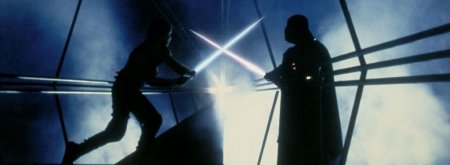'The Narnia Code' - an interview with Michael Ward
The Rev. Dr. Michael Ward is an Anglican minister and the author of Planet Narnia: The Seven Heavens in the Imagination of C.S. Lewis. It was made into a BBC documentary called The Narnia Code, broadcast on BBC1 on 16 April 2009 and repeated on BBC4 in May of that year. He spoke to Evangelicals Now.
EN: Explain simply your thesis.
MW: In a nutshell: Narnia is based on the seven heavens.
Now for the longer answer!
Lewis once said that the whole Narnia series was ‘about Christ’. Yes, indeed. I totally believe him. But how is it about Christ?
At one level, you would say that it’s about Christ by being constructed with biblical parallels. The central character, the lion, Aslan, is a Christ-like figure who creates the world of Narnia, redeems it, and eventually judges it. These biblical parallels are very clear in three of the seven books.
But when you look at the other four Narnia Chronicles, it’s less easy to see obvious biblical parallels. Sure, Aslan is still Christ-like in various ways – guiding people, forgiving people, and so on – but there’s no major scriptural episode of Christ’s life or ministry that is being ‘reimagined’ for this magical world. No Narnian version of the birth of Christ, for example. No Narnian ascension story. No Narnian Pentecost. Why does Aslan enter the story among dancing trees in Prince Caspian and then give a great war-cry? Why does he fly in a sunbeam in The Voyage of the Dawn Treader? Why does he not appear in the land of Narnia at all in The Silver Chair?
There seems to be little rhyme or reason, biblically speaking, for the way Lewis has chosen to portray Aslan in these books. And this has led some people to say that Narnia was hastily put together, without much care or attention. In fact, Lewis’s friend, Tolkien, dismissed the books as a mish-mash and he soon gave up trying to read them.
This apparent randomness of the Chronicles has mystified Lewis scholars because Lewis’s own attitude to storytelling was actually very careful and painstaking. He said that writing the Narnia books took ‘all my imagination’ and he had a childlike desire to make every element ring true. He said:
A child is always thinking about those details in a story which a grownup regards as indifferent. If when you first told the tale your hero was warned by three little men appearing on the left of the road, and when you tell it again you introduce one little man on the right of the road, the child protests. And the child is right. You think it makes no difference because you are not living the story at all. If you were, you would know better.
Lewis Wasn’t Sloppy
So the idea that Lewis could have just slopped the Narnia tales together without any great thought is not at all convincing. If the books are a hodgepodge, it would be totally uncharacteristic of their author.
And this has led Lewis scholars to go looking for some underlying scheme which might give the books a clearer sense of unity. All sorts of theories have been put forward – such as the seven deadly sins, or the seven sacraments. But none of these ideas has persuaded people.
What I’ve discovered is that Narnia is actually based on the seven heavens – a lifelong subject of interest for C.S. Lewis. It’s really remarkable that it’s taken so long for this to be found, because the planets are all over the rest of his work, most notably in the trilogy of interplanetary adventures he wrote during the Second World War.
Until the invention of the telescope 400 years ago, there were believed to be only seven planets. They included the sun and the moon, and the other five were Mars, Mercury, Venus, Jupiter, and Saturn. And it used to be believed that each of these seven planets orbited Earth in its own ‘heaven’. That’s what St. Paul is talking about when he mentions a man ‘in Christ’ who was ‘taken up to the third heaven’ (2 Corinthians 12.2) and why other biblical writers talk about ‘the highest heaven’ (1 Kings 8.27; Ephesians 4.10). It also used to be believed that these planets had influences upon the earth. For instance, in Judges 5.20 we’re told that ‘the stars fought from heaven’. The biblical writers often write about the stars as if they were angels – messengers from God. ‘The heavens are telling the glory of God, the firmament proclaims his handiwork’ – in the words of Psalm 19, which, by the way, was Lewis’s favourite psalm.
Medieval Expert
As time went by, people began to link the seven planets with various qualities or attributes. For obvious reasons, the sun was linked with gold and illumination of the mind. The moon was linked with silver and with hunting and wandering (because when there’s a full moon you can go hunting or travelling at night). And the other five planets likewise became connected, for various reasons, to certain qualities. Jupiter was the kingly planet; Mars was the war-like planet, and so forth.
By the Middle Ages, which was the period which Lewis knew all about, because he was Professor of Medieval and Renaissance Literature at Cambridge, the seven planets had developed into full-scale poetic symbols. Lewis called them ‘spiritual symbols of permanent value’ which were ‘especially worthwhile in our own generation’.
And when he wrote the Narnia books Lewis took these planets and turned them into plots. He took these symbols and made them into stories. In three cases the planetary symbolism enabled him to portray Aslan in ways which have clear biblical parallels. In the other four cases, the planetary symbolism allowed Lewis still to depict Aslan in a Christ-like way, though in a less obviously allegorical manner. But when you see how Lewis understood the heavens, all seven Narnia books make equally good sense. They no longer look like a hodgepodge. They turn out to be, as most readers have always instinctively known, a brilliantly designed and intricately imagined set of Christian stories.
EN: Explain how you discovered it.
MW: I was half-way through my PhD at the University of St. Andrews, investigating Lewis’s theological imagination. I’d been doing a good deal of thinking about what Lewis said in his book on prayer, Letters to Malcolm, regarding the importance of ‘wordless prayer’. Lewis thought that ‘prayer without words is best’ if you can manage it. The idea of speaking without using words was very intriguing to me. Why would Lewis, a man so gifted with words, have wanted to pray without words?
He seems to be referring to Romans 8.26, where Paul writes: ‘The Spirit helps us in our weakness; for we do not know how to pray as we ought, but the Spirit himself intercedes for us with sighs too deep for words’.
Spirit of the Planets
Paul indicates that we can communicate with God at the deepest level without recourse to words, as long as we are in the Spirit. And it’s this, I believe, that Lewis was attempting to capture in Narnia. He constructed each Narnian story out of one of the planetary ‘spiritual symbols’ – so that the whole story takes place, as it were, ‘within’ that spirit – the spirit of kingly Jupiter or knightly Mars or what have you. He took his medieval expertise and he turned it to Christian effect in a most skilful way. The thing that made me realise what Lewis was up to was a long poem he wrote called simply ‘The Planets’. This poem is a complex description of the seven heavens and their various qualities. And one line in particular, about Jupiter, really stuck out. One of the things that Jupiter was associated with, according to this poem, was ‘winter passed and guilt forgiven’. When I read those words I realised that they were effectively a five-word summary of The Lion, the Witch and the Wardrobe. The White Witch’s winter passes, and Edmund’s guilt at betraying his siblings is forgiven. And when I looked more closely I saw that the symbolism of Jupiter (or Jove) accounted for the whole way Lewis shaped that book. It’s a Jovial story, just as Prince Caspian is a Martial story, and The Voyage of the Dawn Treader a Solar story, and so on.
EN: Tell us what it means for our understanding of the Narnia books — what extra dimension it adds to them.
MW: Lewis once said that coming to know God is not like just learning a subject. One can’t sit down and ‘study God’, like you might study biology or maths. The process of coming to know God is much more like ‘breathing a new atmosphere’. You haven’t acquired a set of external facts about someone, you’ve stepped into a whole new world, you’ve become immersed in a personality, you’re living inside a different story.
In Narnia we can now see that it was this deep, personal knowledge of God that Lewis was symbolising. The given planetary personality (Christianised) controls the way he constructed the whole Narnian world in each story – from the basic plot-line, to the portrayal of Aslan, to all sorts of incidental details. For instance, the ‘air’ of Narnia is often mentioned having an effect on people: it makes characters stronger in Prince Caspian, for example, and stops Susan’s bowstring from perishing.
And what is true of the Narnian air is also true of the Narnian ruler, Aslan, if one is rightly disposed towards him. Aslan turns the children into true warriors in Prince Caspian; he strengthens them just like the air of that Martial world. So there is this lovely harmony between the Christ-figure and the cosmos that he inhabits in each tale – just as Lewis believed that there was a harmony, if only we had ears to hear it (or lungs to breathe it!), between the real world and Jesus Christ. Of course there’s a harmony between the cosmos and Christ! After all, who created it? Who sustains it? Who is redeeming it? That Christ is upholding the universe doesn’t mean there isn’t evil in the world, but it does mean that all things, even the apparently random and senseless things, ‘work together for good for those who love God’.
Lewis’s Secret Scheme
But that is easier to say than to feel, and this might be one of the reasons Lewis kept his imaginative scheme secret. If he’d told people what he was up to, they wouldn’t have relaxed into the stories. This symbolism isn’t something that Lewis makes explicit in Narnia. It’s implicit, woven into the whole warp and woof of each Chronicle – and all the more powerful for it.
You can read the Chronicles without being consciously aware of the deep harmonies at work in the way Lewis composed the tales, but once you see what the author was up to, the books make sense in a whole new fashion. It’s like a conversion experience. The scales fall from your eyes and you suddenly see purpose and meaning where before you saw no such thing.
It was the most astonishing privilege making this discovery, and it’s been an absolute joy sharing it with people and seeing them catch the excitement as they realise there is far more to Narnia than they ever dreamt of. And if there are beautiful levels of meaning that all of a sudden open up in books that we thought we knew inside out, what might be awaiting us in real life too? That’s the really exciting and challenging thing.
For more information, visit Michael’s website: www.planetnarnia.com.
Buy Planet Narnia from Amazon.co.uk
Buy Planet Narnia from Amazon.com
© 2009 Evangelicals Now
This item was originally published in the June 2009 edition of Evangelicals Now. It is published here by the kind permission of the editors. For a free sample issue or to subscribe to Evangelicals Now, click here.



